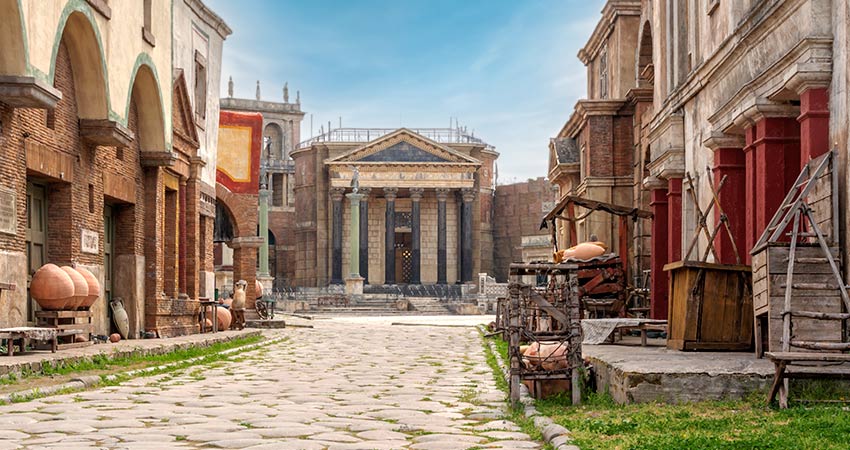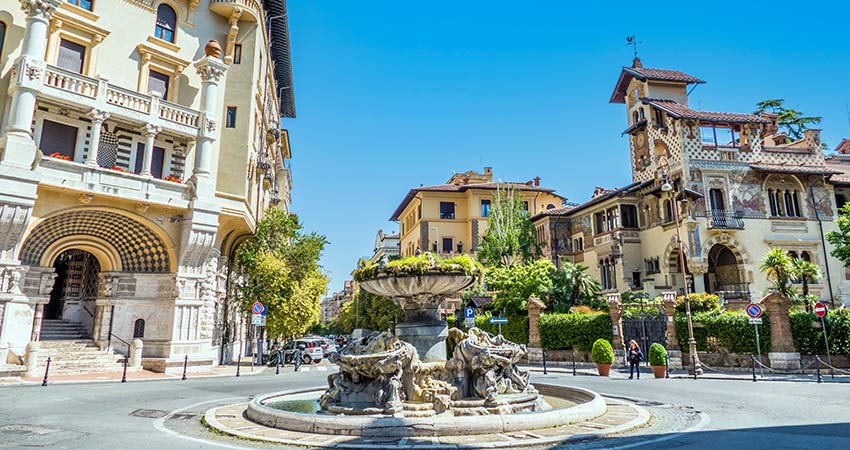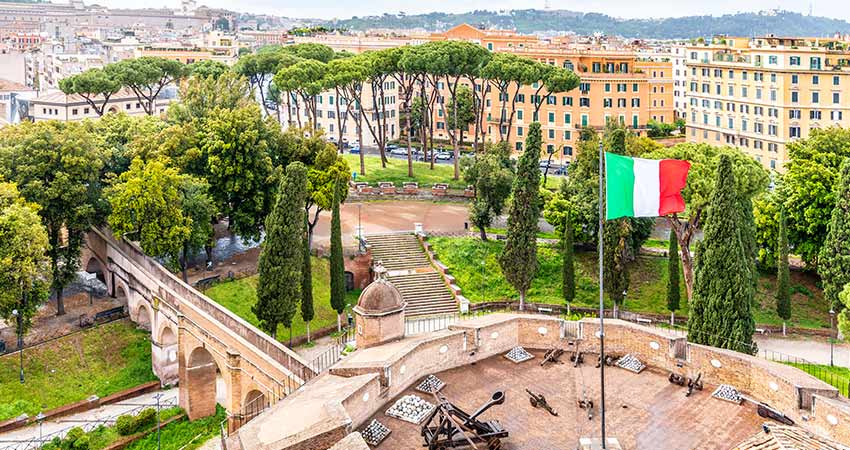Rome, the Eternal City, has enchanted travelers for eons. This region of timeless beauty, first settled 14,000 years ago, holds the hopes and fears of countless people from civilizations that once flourished, thrived, and then faded into the mists of time.
Today Rome is the home of artistic masterpieces. Its winding streets and lanes are a heady mix of eclectic shops, local crafts and stylish clothing, exceptional trattorias, caffe and wine bars, plus traditional cuisine. The Colosseum, the Pantheon, the Parthenon, the Trevi Fountain, the Spanish Steps, and the Vatican… All of these are on every bucket list for travel to Rome.
But, while in the city, consider including some lesser known places. Each one is a small miracle.
Cinecittà si Mostra
Cinecittà is the largest film production studio in Europe. Situated on 99 acres, this is the hub of Italian cinema. This gem, opened in 2011, gives visitors an insider’s look into Italian film from 1937 to 1990. When it was decided to open part of Cinecittà to the public, the goal was to enhance, and tell the story of, the cultural and architectural heritage of the studios by viewing sets, costumes, props, film, and period photographs.
Walk inside, and you’ll become immersed in Italy’s film history with images, videos, interviews, and original costumes worn by filmmaking legends such as Walter Matthau, Penelope Cruz, Michelle Pfeiffer, Vittori Gassman, Scarlett Johansson, and many more.
The first immersive installation recalls historic eras of Rome captured on film, from movies that range from Roman Holiday to Ben Hur and Cleopatra. The Comedy Room was inspired by Once Upon a Time in America. Head to Backstage, and you’ll find six interactive rooms dedicated to direction, screenplays, sound, costume, and prop making.
You’ll explore The Director’s Room; The Screenplay Room (with its storyboards and film sequences); The Sound Room, which illustrates transitioning from silent movies to experimental dubbing; The Costume Room; The Room of Fiction, with reconstructions of sets and transforming faces with special effects; The Green Screen Room where you can play with a digital key, allowing you to set objects on virtual backgrounds; Felliniana, for all things related Federico Fellini; and then to three other rooms, ending with The House of Pleasure.
This is located on the Via Tuscolana.
Quartiere Coppedè
A hidden neighborhood, this area of Rome is uncrowded and has unique style. It takes its name from the Italian architect, Coppedè, and was built between 1919 and 1927… the year of his death. He blended various styles of architecture to create something brand new, but the biggest influence is Art Nouveau. Look closely, and you’ll also spot hints of Baroque, Greek, Roman, and Assyrian styles. This area is heaven for those who love architecture, and it’s also a calm repast for people who are simply delighted by how far imagination can take us.
Quartiere, just outside Rome’s historic center in the Trieste Salario neighborhood, fans out from the joyous Piazza Mincio. The central fountain is one of Rome’s loveliest. Fontana delle Rane, or Fountain of Frogs, pays homage to nature. Fed by Acqua Marcia, and made of cement and travertine, the basin is 30 feet in diameter, creating a pond. Rising from this are pillars with eight frogs, each launching a water jet, and ready to jump into the water. Below that, four male figures, with hair blowing in the wind and holding fishing nets, blow water around more frogs, bees, and seashells. The play of water into various levels is beautiful fun.
Passetto di Borgo
In 1527, as an army of 35,000 mercenaries descended on Rome, the Pope was stuck inside St. Peter’s Basilica. The Pope’s private army, the Swiss Guard, were the only thing standing between his life and death. The Swiss Guard scurried Pope Clement VII through an emergency passageway, leading to the Castel Sant’Angelo. 189 Swiss Guard soldiers were on duty, and only 42 survived. Rome fell. It was reported that Rome’s population decreased from 55,000 to 10,000 as citizens left or were killed.
After five months in hiding, the Pope paid a handsome ransom and, disguised as a peddler, escaped to Orvieto. When you’re there, it simply looks like an ancient fortification wall, but the passageway at the top remains. (The wall was built in 850 and rebuilt in 1277.) In the year 2000, the Passetto was updated. It is now open to visitors in the summer. And the Swiss Guard still holds a secret key… just in case.
Palazzo Malta
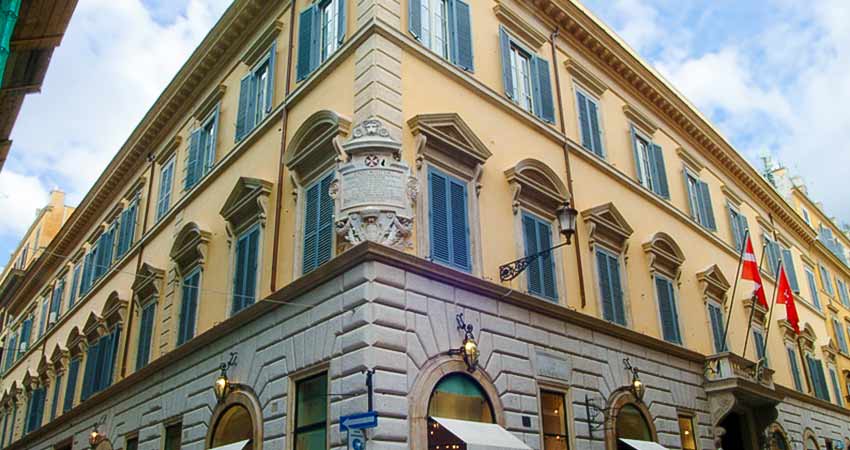
The Vatican is a country that exists within Italy’s borders, and it’s not the only one. The Order of Malta is a religious order that is a sovereign entity, although without physical territory. Situated in the heart of Rome’s historic district, on Via dei Condotti, the Magistral Palace has been the residence of the Grand Master and the Sovereign Order of Malta’s government for almost 200 years.
The Palace was given to the Order of Malta in 1629 by Father Antonio Bosio, a founder of Christian archaeology. All of the Order’s business and activities are overseen here, and Italy has granted it extraterritorial rights. The two flags of Malta fly at its entrance, and the personal flag of the Grand Master is raised when he is in residence. Mass is said each morning, dedicated to St. John the Baptist.
Inside you’ll find the Magistral Library and Archives, a day care center, the Magistral Mint and Post Office, as well as administrative and finance offices. There’s a new Visitor’s Centre. Get the scoop about the quirky Order of Malta, a country without land, and recognized by over 100 countries as an independent entity with its own stamps, passports, and coins.
Catacombs of Priscilla
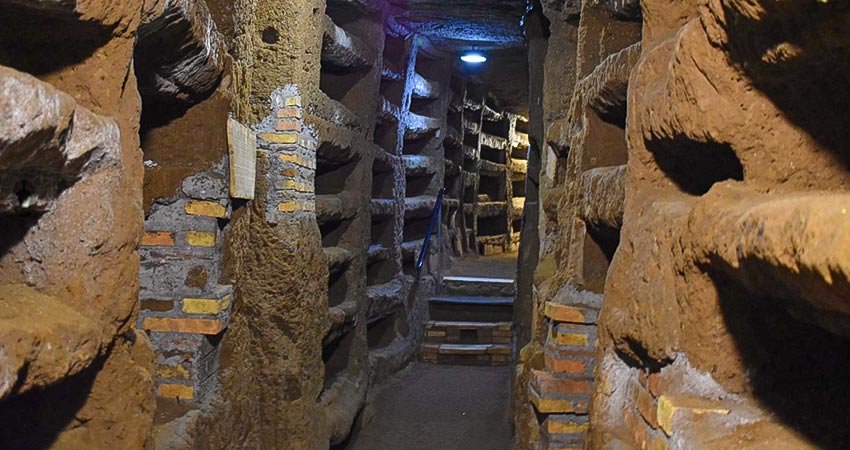
Called “The Queen of the Catacombs” due to the number of martyrs buried here, it opens onto Via Salaria and the entrance to the convent of the Benedictine Sisters of Priscilla. Few people visit, which is surprising. Excavated between the second and fifth centuries, these catacombs are enumerated in just about every ancient topographical and church document. (The donor of this land was a Roman noblewoman, Priscilla.)
The Benedictine nuns are happy to give tours through the catacombs that hold over 40,000 martyrs. There are exceptional paintings here, including the first image of Madonna and Child.
La Botticella
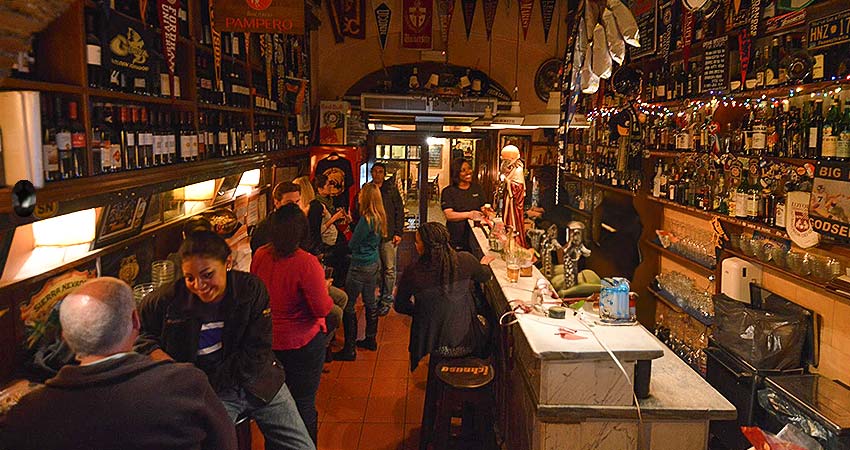
The tagline for this pub is: “Arrive a visitor, Leave a friend!” This is a favorite watering hole for locals, and also one of the best places in Rome to meet people from around the world. It was opened in 1991 by Giovanni Poggi, he’s still the bartender, and the goal was to create a classic pub atmosphere that was nowhere to be found in Rome. He succeeded.
Those who love craft beers are in for a special treat—they have one of the world’s rarest beers on tap. There are only fourteen Trappist monasteries in the world that brew craft beer, and this spot is one of the few that offers their legendary Tre Fontane on tap. In 2015, after discovering an ancient beer recipe, the monks of Tre Fontane released a eucalyptus-infused, strong pale ale. It is now known as one of the most unique recipes in the world.
Ideal for a pre-dinner drink, or a nightcap, Botticella’s has eight Italian craft beers on tap, fabulous cocktails, unusual liquors, and plenty of good cheer. It is located next to the Piazza Navona.
La Taverna del Ghetto
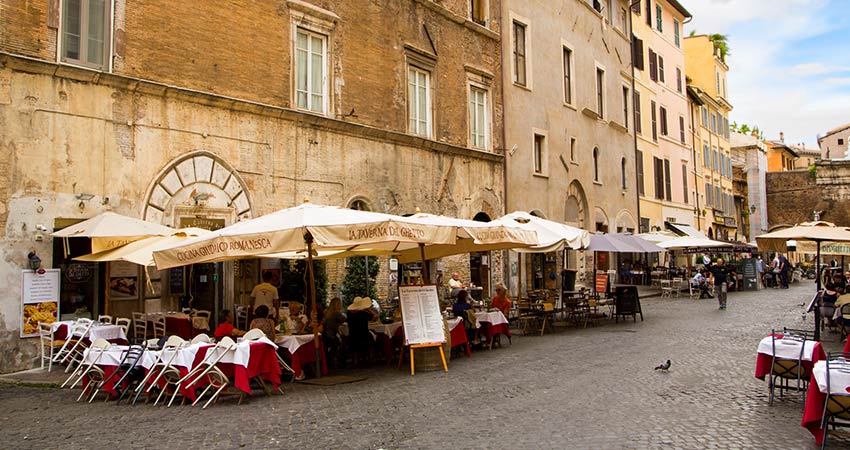
This is the place to enjoy authentic Jewish Roman food. You can savor kosher cooking in medieval dining rooms or sitting outside on the piazza. This restaurant, the first kosher eatery in Rome, is a unique experience, offering tastes that come from old culinary traditions.
One of the clientele’s favorites is entrecote with green pepper. Following Jewish food guidelines, which prohibits mixing meat with milk, the recipe includes beef, soy milk, margarine, whiskey mustard, and green pepper. Other favorites include crepes without milk, grilled sea breem & sea bass, eggplant and cherry tomato pasta, pizzarelle with Pesach honey, and Purim sweets with Haman’s ears. Be an adventurous traveler! La Tavera del Ghetto is located on Via Portico d’Ottavio, near the charming Piazza Mattei.
Whether you’re planning your first trip to Italy, or it’s your favorite place in the world, your Italian experience will likely include Rome. Consider venturing to a few lesser-known spots. These may be the places that you remember the most.
Rome is one of the best places to fall in love with life again. Let your Destination Expert know that you want to spend enough time in the Eternal City to hit the highlights and also add a few off-the-beaten path gems.


